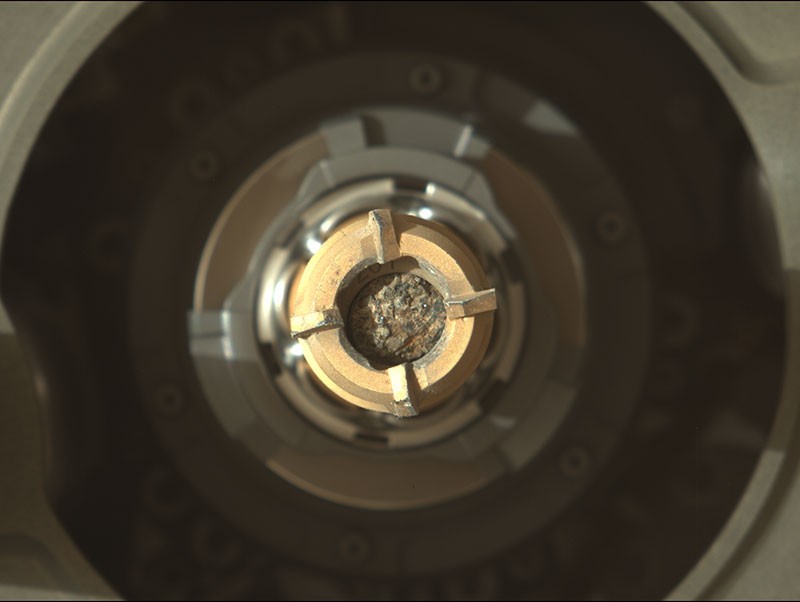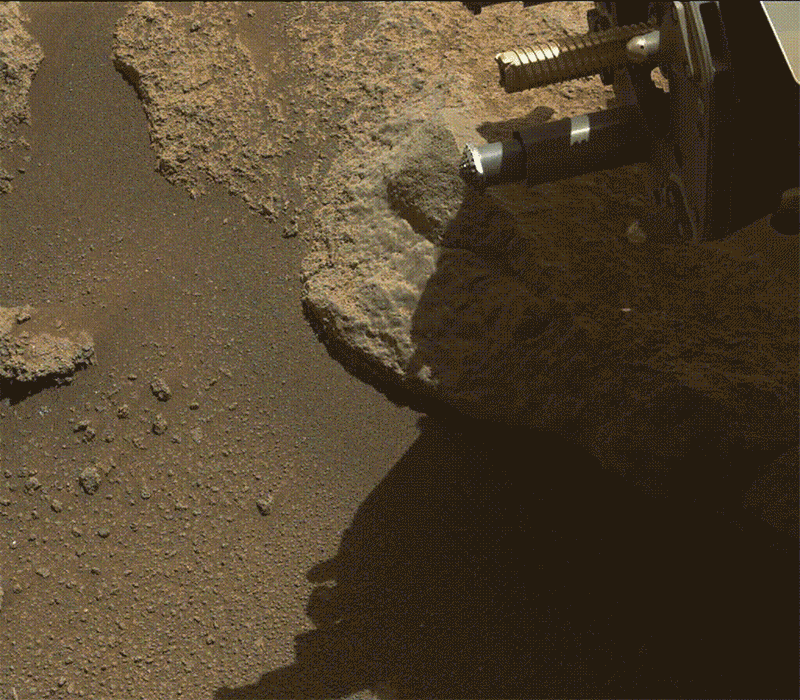where Landing on Mars one for a yearNASA’s probe has traveled more than 3 kilometers through rocky terrain, Recorded the first flight on this planet By helicopter they collected six samples of the precious rock that – if all goes well – will one day be brought back to Earth, along with many others, for study.
perseverance Landed at Jezero Craterjust north of the Martian equator, on February 18, 2021 In order to search for signs of the past life. The researchers set out on the $2.7 billion rover to look for these signs in an ancient delta, where the river that once flowed into the crater was depositing sediment and rock – an environment that could have supported life. But the rover has not yet arrived.
Instead, perseverance spent the year circling the bottom of the crater, leading to a host of surprising discoveries—one being that Jezero’s floor is made of igneous rock. These were formed when molten rock cooled and solidified billions of years ago. Some researchers thought the crater floor would be made of sedimentary rock, which formed when wind or water deposited layers of sediment over time. But the rover found a different history of the landscape.
Igneous rocks are important because scientists can analyze the radioactive decay of the elements within them to determine the age of the rocks. If and when the persistence samples return to Earth, researchers will be able to date rocks from specific places on Mars for the first time.
Before the rover landed, the expedition scientists didn’t know they would hit the fiery jackpot. “I delivered Jezero,” says Katie Stack Morgan, deputy mission project scientist at the Jet Propulsion Laboratory in Pasadena, California.
fiery past
Scientists discovered that Jezero’s floor was not what they expected when the rover began preparing to dig its first sample in August. Explore the geology of the area, and persevere the ground in a piece of Martian rock to reveal a new surface. It looked like an igneous rock on the ground with salt-framed holes – holes that might have formed as water flowed through the rock. This means that the rover was looking at an ancient volcanic rock that reacted with water, indicating a life-friendly environment like never seen on Mars before. “That was a great moment for the job,” says Stack Morgan. “These are ideal places to look for signs of ancient life hosted by the rocks.”
But when I persevered, I tried to dig a kernel, The material collapsed and slipped from the sampler. Because the sampling procedure was automated, the rover ended up with an empty but sealed tube, which mission scientists attempted to make a positive spin on, calling it a sample of Mars’ atmosphere.
“You really can’t give Mars a wish list,” says Tanya Bosak, a geologist at the Massachusetts Institute of Technology in Cambridge. “Mars gives you what it wants to give you.”
A month later, successfully persevere Dig the first pair of cores, to a similar igneous rock altered by water (see ‘Mars sampling’). This rock formation, called Maaz, covers much of Jezero’s floor.
The craft then drove south and west, aligning with an area of sand dunes called Setah, and collected another couple of samples. (Combines pairs to increase the probability of returning a sample to Earth.) Expedition scientists believed that the Setah rocks would be sedimentary, because visually they appear to consist of different layers. But as soon as Perseverance walked away from some of the rocks of fame, another surprise arose. They, too, were fiery.
Using various tools to analyze the chemical composition of the rocks, Perseverance found large grains of a mineral called olivine, coated with another called pyroxene. These minerals are generally found in igneous rocks or volcanic regions on Earth. Stack Morgan says this is strong evidence that the Sittah rocks formed when a large mass of molten rock cooled. The olivine crystals would have formed first, sinking toward the bottom of the cooling magma, then pyroxene forming around them—forming layered rocks that appear to be sedimentary.
The Seetah rocks, like the Moaz rocks, also show signs of interaction with water in the past. It may even contain—as reported at a December meeting of the American Geophysical Union by Eva Schiller, a geologist at the California Institute of Technology in Pasadena—containing organic molecules, possibly produced by non-biological processes, such as those seen in some Martian meteorites.
pressure rises
Finally, the Perseverance is supposed to collect at least 30 samples of rock, dirt, and air. It will place them in one or more locations to retrieve for future missions, in what could be the first sample returning from Mars. Moving the cores to Earth would be a complex process that would require another rover to pick them up, a rocket to launch them into Mars orbit, and a spacecraft to pick them up and return them to Earth; That won’t happen before 2031. NASA and the European Space Agency are cooperating on the plan, and NASA announced this month that it has chosen a contractor to build the rocket that will raise the samples to Mars’ orbit.
“I’m very excited that we’ve finally taken the first steps toward collecting samples from Mars and hopefully they’ll come back,” says Meenakshi Wadua, a planetary scientist at Arizona State University in Tempe and NASA’s lead scientist for the Mars sample. return programme. “We already have some really cool samples to assess the question of whether there was ancient life.”
Despite the rover’s success so far, pressure is mounting on it to reach the long-awaited Delta. Perseverance is now making its way as quickly as possible; Earlier this month, it set a long-distance driving record on Mars, traveling more than 240 meters per day. However, it likely won’t reach the delta until April.
Time is of the essence because perseverance has only one Earth year left to meet the schedule to complete the list of main tasks: get to the delta, collect samples there, drive over the crater rim to put them somewhere to pick-up. The rover is currently tracking its steps toward its landing site: it will collect another pair of cores from Moaz along the way, then circle around the dune area to reach the delta. Perseverance is working at a much faster pace than NASA’s previous spacecraft, Curiosity, which has been exploring Gale Crater since its landing in 2012. “We have to keep moving,” Boussac says.
Although the operations were mostly smooth, there were some small errors, along with the initial failed attempt to collect a rocky core. In December some gravel fell while trying to dig and jammed some of the mechanisms in the rover sampling equipment. The engineers eventually managed to persevere and shake the gravel to solve the problem. In recent weeks, says Jose Antonio Rodriguez Manfredi, principal investigator for the rover’s weather instrument at the Astrobiology Center in Madrid, strong winds, dust and small pebbles have pushed into the rover’s many wind sensors, damaging them.
The small helicopter named Ingenuity, the companion of perseverance, continues to operate. The researchers plan to make five flights over a 30-day period. But so far it has made 19 trips and covered more than 3.8 kilometers. It is currently staged ahead of the probe and will be used, if it continues to stay, to explore the routes the rover might take once it reaches the Jezero Delta to collect more cores.
“The delta samples are going to be amazing,” Boussack says. “I can’t wait. I really can’t wait.”

“Certified music scholar. Freelance analyst. Social mediaholic. Hipster-friendly web nerd. Zombie buff.”


